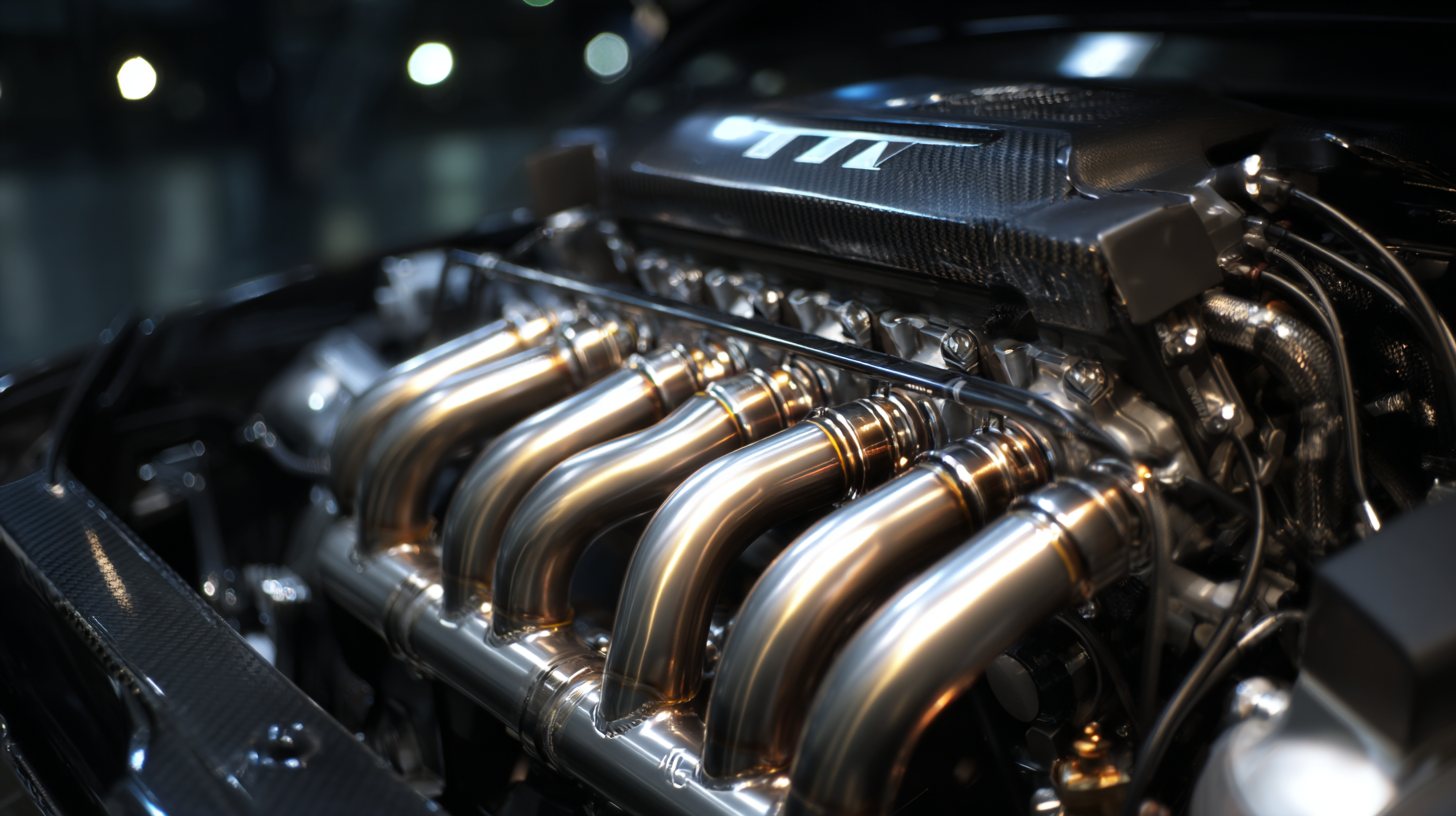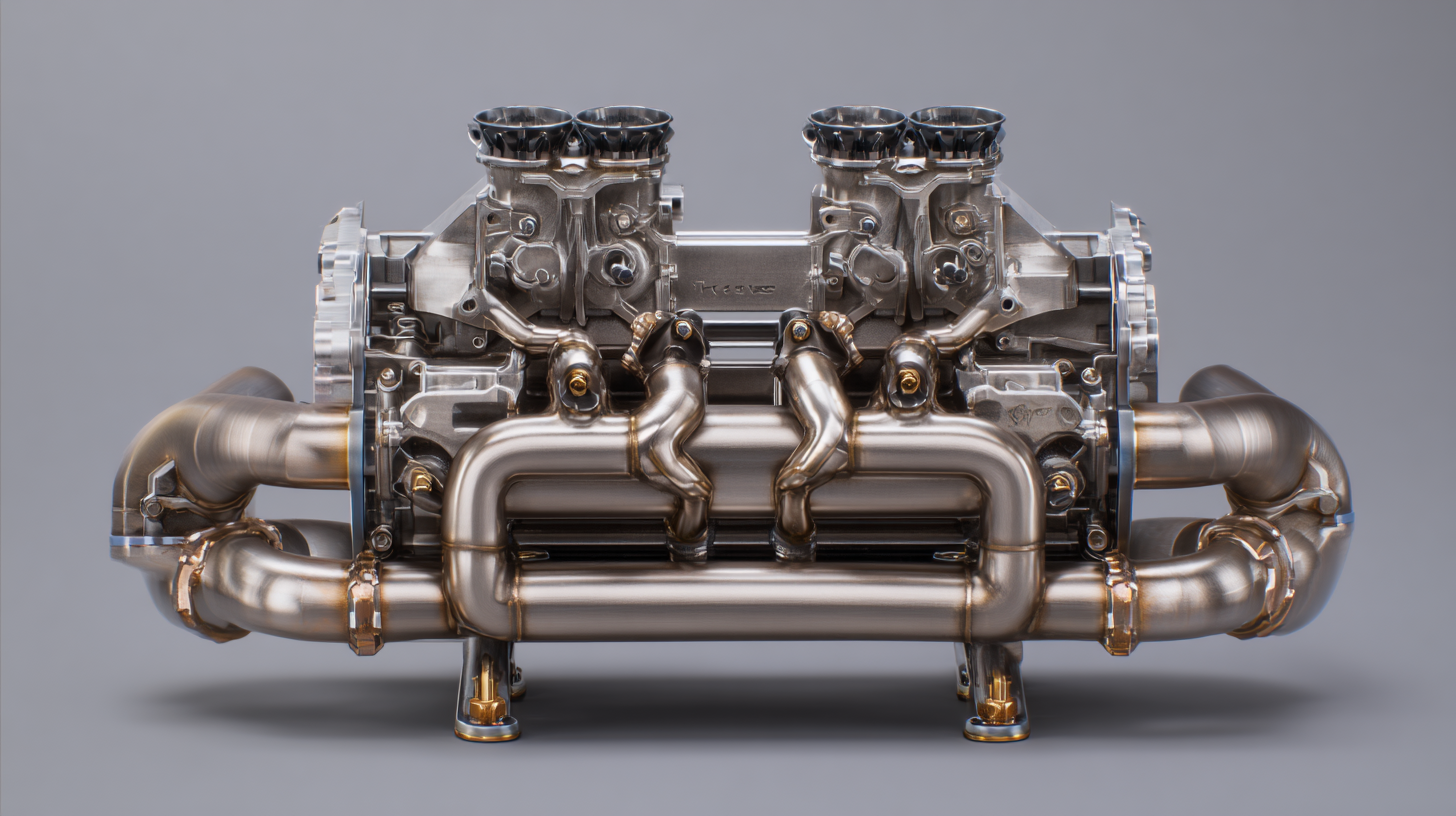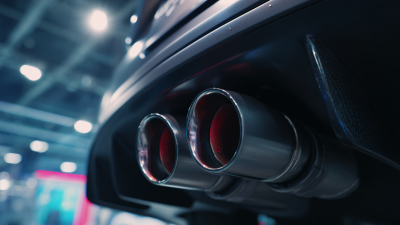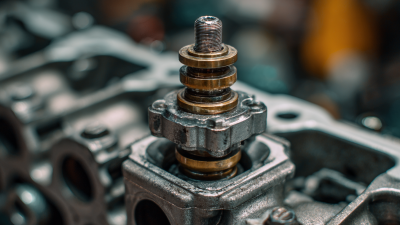Unlocking Performance Enhancements with Advanced Valve Exhaust Systems
The quest for enhanced engine performance and efficiency has led to significant advancements in automotive technology. Among these developments, the Valve Exhaust System stands out as a critical component capable of optimizing vehicle output and reducing emissions.
According to the market research report by Grand View Research, the global automotive exhaust system market is projected to reach $48 billion by 2025, driven by stringent emission regulations and the rising demand for high-performance vehicles. This underscores the importance of innovations in exhaust technologies, particularly those focused on valve systems, which play a pivotal role in managing exhaust flow and improving overall engine dynamics.

Recent studies indicate that vehicles equipped with advanced Valve Exhaust Systems can achieve a reduction in NOx emissions by up to 50%, while also enhancing fuel efficiency by approximately 10-15%. These systems utilize variable valve timing and advanced materials to increase responsiveness and durability, providing manufacturers with the flexibility to meet diverse performance standards.
As the automotive industry continues to innovate, the integration of smart valve technologies will undoubtedly lead to more sophisticated exhaust solutions, contributing to the overarching goals of sustainability and high-performance engineering.
As such, this article will delve into the transformative impact of Valve Exhaust Systems on modern automotive design and their potential to unlock unparalleled performance enhancements in the industry.
Understanding Advanced Valve Exhaust Systems
Advanced valve exhaust systems are engineered to optimize engine performance by allowing for greater control over exhaust gas flow. These systems utilize variable valve timing technology to adjust the timing of exhaust openings, leading to improved power delivery and fuel efficiency. According to a report by the Society of Automotive Engineers (SAE), vehicles equipped with advanced valve systems can achieve up to a 10-15% increase in horsepower while also reducing emissions by approximately 20%, making them a critical component in modern automotive design.
Tips for integrating advanced valve exhaust systems include ensuring compatibility with existing engine architectures. Conducting a thorough analysis of the engine's performance characteristics will help in selecting the right system that aligns with specific driving needs. Additionally, regular maintenance and tuning of these systems are vital, as they can significantly influence overall engine dynamics and longevity.
Moreover, understanding the benefits and limitations of advanced valve exhaust technology can lead to better decision-making. For instance, while they can greatly enhance performance, the initial cost and complexity might be a consideration for some manufacturers. By keeping abreast of industry trends and technological advancements, automotive enthusiasts and professionals can leverage these systems to maximize performance while maintaining operational integrity.
Performance Enhancements with Advanced Valve Exhaust Systems
This chart represents the performance improvements (measured in horsepower) associated with different types of advanced valve exhaust systems. The data shows the relative horsepower gains realized after installation compared to standard systems.
The Role of Exhaust Valve Technology in Engine Performance
 The exhaust valve technology plays a pivotal role in enhancing engine performance by optimizing the expulsion of exhaust gases. Advanced valve designs and materials allow for improved flow characteristics, which can significantly reduce back pressure and increase engine efficiency. By utilizing variable valve timing and electronics, modern exhaust systems can adapt to different driving conditions, ensuring that the engine breathes better across various RPM ranges. This adaptability not only enhances power output but also contributes to better fuel efficiency and reduced emissions.
The exhaust valve technology plays a pivotal role in enhancing engine performance by optimizing the expulsion of exhaust gases. Advanced valve designs and materials allow for improved flow characteristics, which can significantly reduce back pressure and increase engine efficiency. By utilizing variable valve timing and electronics, modern exhaust systems can adapt to different driving conditions, ensuring that the engine breathes better across various RPM ranges. This adaptability not only enhances power output but also contributes to better fuel efficiency and reduced emissions.
Additionally, the integration of advanced materials in exhaust valve manufacturing leads to improved durability under extreme temperatures and pressures. This resilience enables engines to operate more effectively in high-stress environments, such as racing or heavy-duty applications. The precision in valve timing and lift provided by modern technologies, including direct electronic control, allows for a more dynamic combustion process, which is crucial for maximizing performance. As a result, the advancements in exhaust valve technology are essential for unlocking the full potential of modern engines, paving the way for higher performance standards and environmental benefits.
Comparison of Traditional vs. Advanced Exhaust Systems
The choice between traditional and advanced exhaust systems plays a critical role in optimizing engine performance. Traditional exhaust systems, often characterized by simpler designs and materials, can restrict airflow and lead to inefficiencies in combustion, affecting overall vehicle performance. While they are generally more cost-effective and easier to maintain, they lack the ability to significantly enhance engine power output and fuel efficiency.
On the other hand, advanced exhaust systems utilize innovative materials and designs, such as lightweight alloys and advanced ceramics, to improve exhaust flow and reduce back pressure. These systems not only contribute to enhanced throttle response and horsepower but also facilitate better heat management. Moreover, they are tailored to meet stringent emissions standards, aligning with the industry's push for sustainability and reduced carbon footprints. As manufacturers continue to explore these advanced technologies, the shift towards more efficient engine solutions becomes increasingly significant in driving automotive innovation.

Benefits of Tuning Valve Timing for Enhanced Power Output
Tuning valve timing is a critical aspect of optimizing engine performance, especially in modern high-performance vehicles. By meticulously adjusting the timing of the opening and closing of the intake and exhaust valves, engineers can significantly improve the engine's air-fuel mixture flow, leading to better combustion efficiency. This enhanced airflow facilitates greater power output and quicker throttle response, allowing drivers to experience a more engaging and dynamic driving experience.
Advanced valve exhaust systems also bring several benefits beyond just power enhancement. By allowing for more precise control of exhaust flow, these systems can reduce back pressure and improve scavenging effects, which are crucial for extracting maximum energy from the combustion process. Additionally, fine-tuning valve timing can contribute to improved fuel efficiency, as an optimal timing setup minimizes wasted fuel and maximizes energy conversion. This dual advantage of performance and efficiency makes tuning valve timing an essential strategy for those looking to unlock the full potential of their engines.
Future Trends in Exhaust System Innovations and Performance Enhancements
As the automotive industry evolves, advanced valve exhaust systems are emerging as a crucial innovation to unlock enhanced vehicle performance. According to a report by MarketsandMarkets, the global automotive exhaust system market is projected to reach $60 billion by 2026, driven by the increasing demand for fuel efficiency and reduced emissions. Future trends indicate a shift toward more sophisticated exhaust technologies, including electronically controlled valves that optimize exhaust flow based on engine demands, improving both horsepower and torque.
Additionally, the integration of real-time data analytics and smart technology in exhaust systems is on the rise. A study by Frost & Sullivan highlighted that vehicles equipped with advanced exhaust systems can achieve up to a 20% increase in engine efficiency. This evolution not only meets regulatory requirements for emissions control but also enhances the driving experience, providing better acceleration and responsiveness. As manufacturers continue to innovate, the role of exhaust systems in overall vehicle performance will only grow, setting the stage for a new era of automotive excellence.
 +86 17870576410
+86 17870576410

Home
Company Profile
Products
News
Blog
Contact Us
 Contact Number
Contact Number
 The
The 





